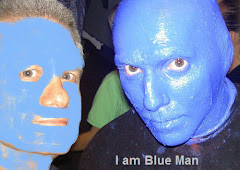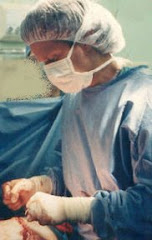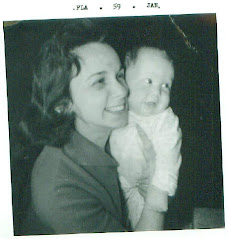A little while ago I helped deliver twins in an emergency C-section situation. The babies were way early, way small and unfortunately they had to be delivered right away... "Stat", on steroids.
This scene is absolutely chaotic. Or rather sort of an organized chaos. At one point I counted 16 people in the room with various roles and responsibilities. There is the scrub team which includes a surgeon, an assistant, and a surgical tech. There is a respiratory support team for each of the twins. There is an anesthesia team which includes a physician and a nurse anesthetist. Then there is the pediatric and neonatal resuscitation team from pediatrics and neonatal intensive care. Then there is a charge nurse for the operating room and patient care assistants to assist all of the team members.
It truly begins as a rather chaotic scene with all the members of the team scurrying around the room preparing for the delivery. But once the timeout is complete and the scalpel hits the skin it is truly poetry in motion. I don't believe there is any more skilled team in healthcare today then those that deal with high-risk births. It is truly a pleasure and a blessing to be a small part of the effort.
Friday, January 31, 2014
Thursday, January 30, 2014
Gross Anatomy is not Gross
139 years ago, Thomas Eakins painted Dr. Samuel Gross, his colleagues and students performing surgery on a live patient with what I suspect is a cowering family member shielding her eyes from the carnage. Dressed in his daily attire, the depiction of his bloody hand wielding a scalpel and his colleagues retracting and cutting on this leg is sobering. Infectious disease experts shudder in horror at the scene.
I'd like to think that my course in "Gross Anatomy" was named for the man, the surgeon and the teacher who had the audacity to perform such an event absent gown, gloves, mask or other protective equipment. But many of my colleague argue that it's simply a reference to gross or macro anatomy on a large scale as opposed to micro (small) anatomy. Either way, I'm proud to be in the line somewhat of such men who dared to do cutting edge things, albeit without gloves.
We really have come a long way in surgery and the study of Anatomy in the past 140 years. And we don't let family watch surgery from a kneeling position in the corner of the room either. Although, perhaps we should.
I'd like to think that my course in "Gross Anatomy" was named for the man, the surgeon and the teacher who had the audacity to perform such an event absent gown, gloves, mask or other protective equipment. But many of my colleague argue that it's simply a reference to gross or macro anatomy on a large scale as opposed to micro (small) anatomy. Either way, I'm proud to be in the line somewhat of such men who dared to do cutting edge things, albeit without gloves.
We really have come a long way in surgery and the study of Anatomy in the past 140 years. And we don't let family watch surgery from a kneeling position in the corner of the room either. Although, perhaps we should.
Target --> Bladder Catherization
The target was the bladder. Run a catheter made of a rubber like material into the urethral opening, up the urethra into the bladder to allow a conduit for urine from the bladder to a bag hanging on the bed frame.
The procedure is done 1000's of times per day across the U.S. by nurses, medical assistants and other healthcare professionals. There is even a program for patients to "cath" themselves.
It's not rocket science but has some risks of complications including infection. If the procedures are followed correctly, complication are minimized and the procedure is effective and often necessary in the healthcare of the patient. Unless....
Unless of course you fail to understand the anatomy. In the female, the urethral opening is located anterior (toward the front) to the both the vagina opening and the anus.
Earlier this year, I heard a cry for assistance from a nurse in the OR. "I think there is poop coming out of her urethra. does she have a fistula?" I gloved up and made the attempt to assist her as she struggled with the procedure. But very quickly I recognized that she was attempting to place the urinary catheter into the rectum through the anus. A normal place for poop to be located.
It was everything I could to do to laugh out loud, but behind my mask, I had the biggest grin you can imagine.
She thanked me profusely for assisting and pointing out her problem with the very complicated female anatomy.
The procedure is done 1000's of times per day across the U.S. by nurses, medical assistants and other healthcare professionals. There is even a program for patients to "cath" themselves.
It's not rocket science but has some risks of complications including infection. If the procedures are followed correctly, complication are minimized and the procedure is effective and often necessary in the healthcare of the patient. Unless....
Unless of course you fail to understand the anatomy. In the female, the urethral opening is located anterior (toward the front) to the both the vagina opening and the anus.
Earlier this year, I heard a cry for assistance from a nurse in the OR. "I think there is poop coming out of her urethra. does she have a fistula?" I gloved up and made the attempt to assist her as she struggled with the procedure. But very quickly I recognized that she was attempting to place the urinary catheter into the rectum through the anus. A normal place for poop to be located.
It was everything I could to do to laugh out loud, but behind my mask, I had the biggest grin you can imagine.
She thanked me profusely for assisting and pointing out her problem with the very complicated female anatomy.
Sunday, January 26, 2014
Nutrition
There has been so much cancer, infection of all kinds, diabetes and GI tract diseases. Seems we are being inundated with it all at the community hospital level. And over the years I've read good discussions about the connection between what we eat and all of these. Isn't it time we made a strong effort to return to a more natural way of eating to at least test the theory?
It would be unheard of to deliberately go to the medicine cabinet and ingest antibiotics and/or hormones for no reason. Yet we ingest foods with both and somehow that seem normal to society when we eat meats. We continue to be an obese people eating too much of the "white" stuff including flour, milk, salts and sugars. More amazing, how much of this stuff we feed to sick patients disguised as "nutrition" during hospital stays and convalescence.
Consider raw fruits and vegetables. They really are our natural diet. They contain all of the essential nutrition we need for life. They are complete foods including fats and proteins. They are composed mostly of water, necessary for good hydration and water balance in the body. They are low in salt, fats without any preservatives, additives, cholesterol, uric acid, adrenaline, hormones, antibiotics or pathologic bacteria in their natural state.
But, the dietician retorts, what about protein? Most plants can biosynthesize all 20 standard amino acids (the building blocks of proteins). Every vegetable and fruit has protein, some more than others. In a diet that contains fruits, vegetables, nuts, seeds, legumes and grains...we will get the protein we need without adding meats to the mix. Each food varies from 4-8% protein with all 8 essential amino acids that we cannot produce ourselves but need. Tomatoes, zucchini, cukes are particularly good sources as are leafy greens, carrots, celery, cashews, chia seed, sunflower seeds, flax seed, mushrooms, sprouted beans, lentils and spirulina. Protein is the essence of "green drinks" in that way. I suggest there is plenty of protein.
It is possible to get protein, needed fats and carbohydrates, nutrients of all kinds and the nutrition the human body needs from this type of eating, so it would seem. What's important now is to test this inexpensive intervention and support individuals through the transition from the old to the new way of eating. It's not a diet, it's a lifestyle change. Including some movement exercise, this is a lifestyle with the potential to reverse the trend of disease in developed countries. It's certainly worth the effort. We have nothing to lose but ill health.
It would be unheard of to deliberately go to the medicine cabinet and ingest antibiotics and/or hormones for no reason. Yet we ingest foods with both and somehow that seem normal to society when we eat meats. We continue to be an obese people eating too much of the "white" stuff including flour, milk, salts and sugars. More amazing, how much of this stuff we feed to sick patients disguised as "nutrition" during hospital stays and convalescence.
Consider raw fruits and vegetables. They really are our natural diet. They contain all of the essential nutrition we need for life. They are complete foods including fats and proteins. They are composed mostly of water, necessary for good hydration and water balance in the body. They are low in salt, fats without any preservatives, additives, cholesterol, uric acid, adrenaline, hormones, antibiotics or pathologic bacteria in their natural state.
But, the dietician retorts, what about protein? Most plants can biosynthesize all 20 standard amino acids (the building blocks of proteins). Every vegetable and fruit has protein, some more than others. In a diet that contains fruits, vegetables, nuts, seeds, legumes and grains...we will get the protein we need without adding meats to the mix. Each food varies from 4-8% protein with all 8 essential amino acids that we cannot produce ourselves but need. Tomatoes, zucchini, cukes are particularly good sources as are leafy greens, carrots, celery, cashews, chia seed, sunflower seeds, flax seed, mushrooms, sprouted beans, lentils and spirulina. Protein is the essence of "green drinks" in that way. I suggest there is plenty of protein.
It is possible to get protein, needed fats and carbohydrates, nutrients of all kinds and the nutrition the human body needs from this type of eating, so it would seem. What's important now is to test this inexpensive intervention and support individuals through the transition from the old to the new way of eating. It's not a diet, it's a lifestyle change. Including some movement exercise, this is a lifestyle with the potential to reverse the trend of disease in developed countries. It's certainly worth the effort. We have nothing to lose but ill health.
Subscribe to:
Comments (Atom)








